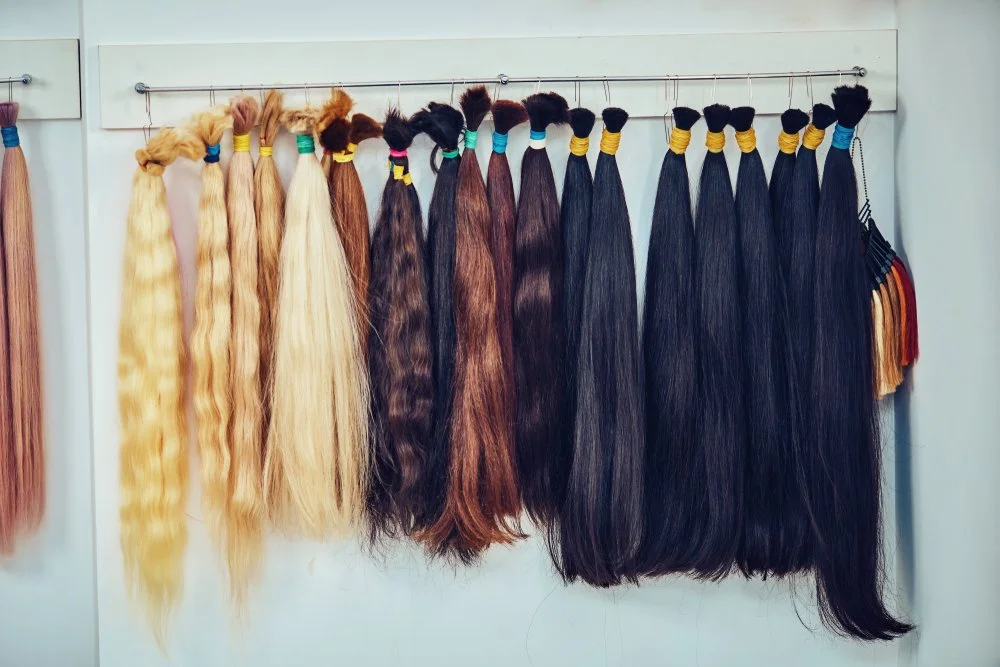Comparing 100% Human Hair Vs. Remy Hair
There are several different products out there in the wig and hair piece world, and knowing precisely what you're getting is very important for any purchase you're making. Two types of hair that are especially well-known, and that are similar in some ways but also different in other important areas, are 100% human hair and what is known as "Remy hair."
At Judi's Wigs, we're here to offer a huge range of hair pieces and wig options to our clients, plus tips on wig care and several other important areas. What are the differences between 100% human hair and Remy hair, what are some types of Remy hair you might consider if you're going that route, and what else do you need to know about this theme? Here's a basic primer.
100% Human Hair
Within the world of wigs and the hair that's used to create them, 100% human hair is one of the most plentiful and well-supplied options. This is because it can be collected from a variety of sources, from people who simply donate their hair to wigmakers to individuals who sell their hair after getting it cut.
100% human hair can be treated and styled in much the same way as your own natural hair, which means it's very versatile; you can curl it, straighten it, dye it, and otherwise manipulate it without worry. It also means that it can be a little bit more high-maintenance than some other types of wig hair, particularly synthetic hair.
Another important differentiator between 100% human hair and Remy hair is the presence (or lack thereof) of the cuticle. Because 100% human hair can be collected in various ways, cuticles for various strands tend to come in a variety of directions -- to compensate for this, hair collected this way will often go through an "acid bath" process to remove cuticles entirely, essentially "stripping" the hair down to its core.
The result is hair that's more prone to tangling and matting, which is why 100% human hair wigs often need to be brushed more frequently than their Remy counterparts. The upside of this process is that it can make the hair appear shinier and smoother, particularly when it's first installed in a wig.
Remy Hair
It's important to note that Remy hair is also human in nature; the term can be a bit deceiving in this area. What it really means: Remy hair is the highest quality of human hair, collected in ways that allows the cuticles to remain intact and pointing in the same direction. Because of this, things like tangling or matting are much less likely.
Remy hair is often collected from a single donor; this allows wigmakers to keep the cuticles all pointing in the same direction, as they would on a head of natural hair. This also means that Remy hair wigs can last longer and require less maintenance than 100% human hair options, making them ideal for those who want the best look possible.
Remy hair is also known to blend extremely well with natural hair, thanks to the way it's collected and the cuticle alignment. This can give Remy hair wigs a more natural appearance overall, which is another reason why this type is so popular.
If you're considering a wig made with Remy hair, you might also come across terms like "virgin" or "cuticle correct." These simply refer to different grades of Remy hair; virgin Remy hair is the highest quality, as it's never been chemically treated, while cuticle correct Remy hair has had its cuticles aligned but may have undergone other processes like coloring or bleaching.
Varieties of Remy Hair
As we were just touching on, Remy hair is actually a somewhat broad category that has several varieties available. These include all of the following:
Indian: Indian hair is a type that requires very little processing in most cases, typically available in natural formats like straight, wavy, curly and so on. Indian hair is available in large quantities in many cases, and is typically very high quality. Some Indian hair will be exported to China and mixed with Asian hair, which tends to be a bit cheaper, so be sure to inquire about this when purchasing it to ensure you're getting the right product.
European: Remy or virgin European hair is known to be both fine and beautiful, and is somewhat rarer than Indian hair as a result. It's also more expensive, particularly virgin European hair. Because of its rarity, European hair is often in very high demand and can be difficult to track down.
Asian: Asian Remy or virgin hair is known for being thick and lustrous, with a lot of body. Because it's so thick, it can be difficult to curl or style Asian hair in some cases. It's also important to note that Asian hair is often mixed with Indian hair when it's sold, so be sure to ask about this if it matters to you.
Peruvian or Brazilian: These two styles, which are very similar in most ways, are actually forms of Asian hair that have been re-named and are now popular in their own right. Peruvian and Brazilian hair is known for being very thick and lustrous, much like Asian hair, but it's also a bit more manageable in some cases.
For more on the differences between 100% human hair and Remy hair, or to learn about any of our wigs or hair pieces, speak to the dedicated team at Judi's Wigs today.

